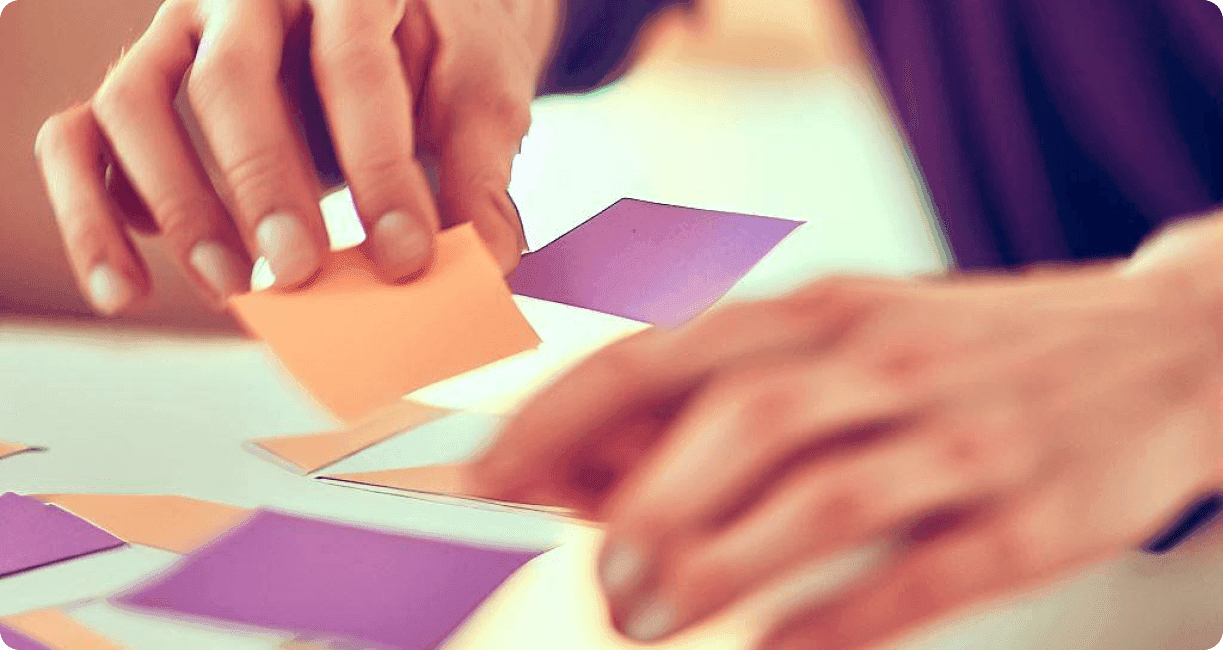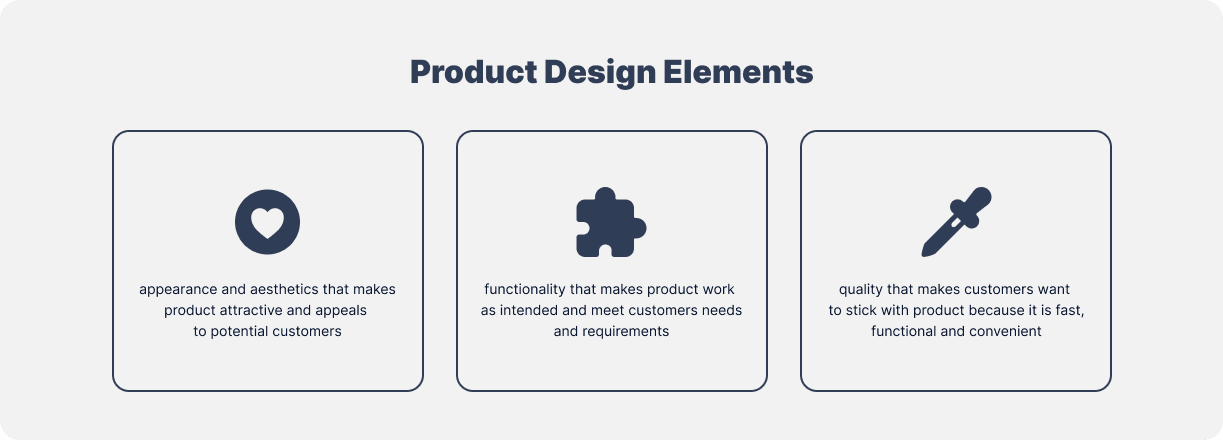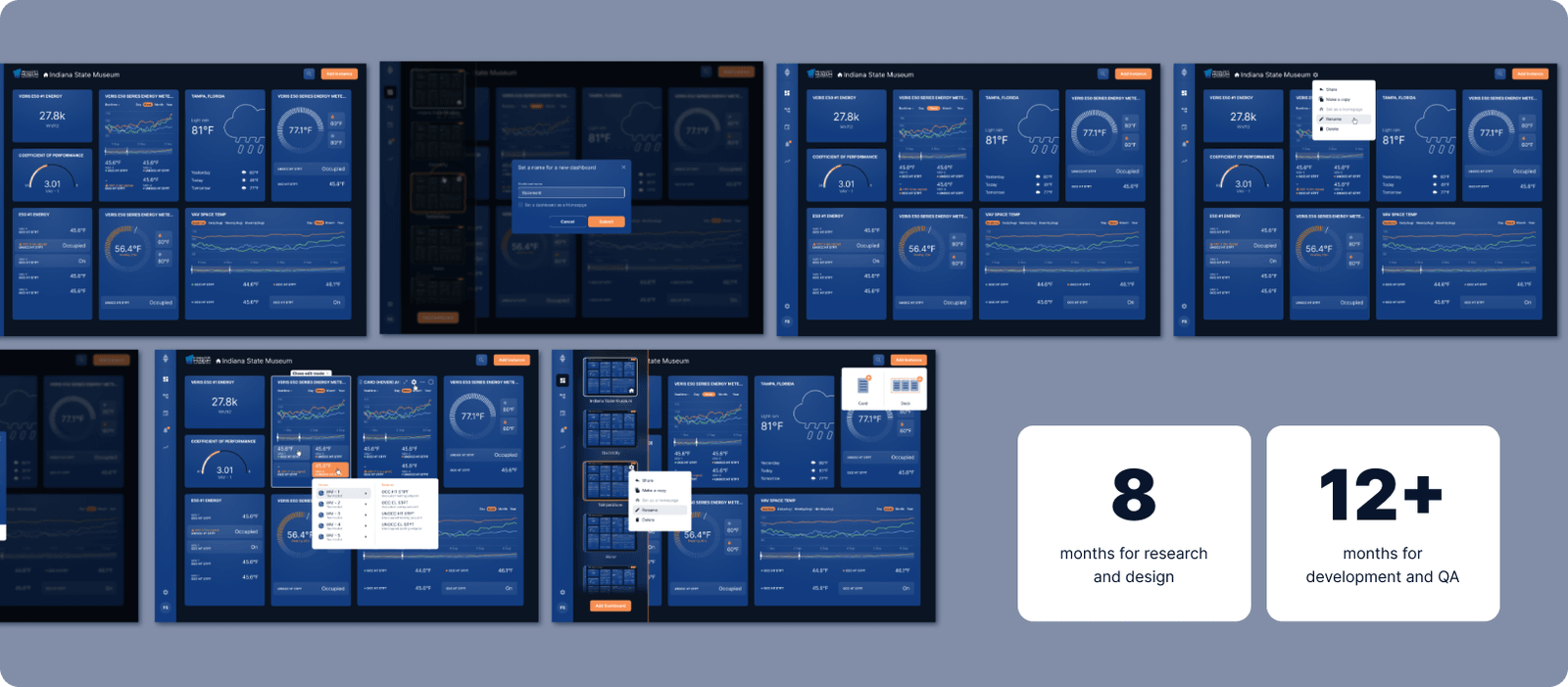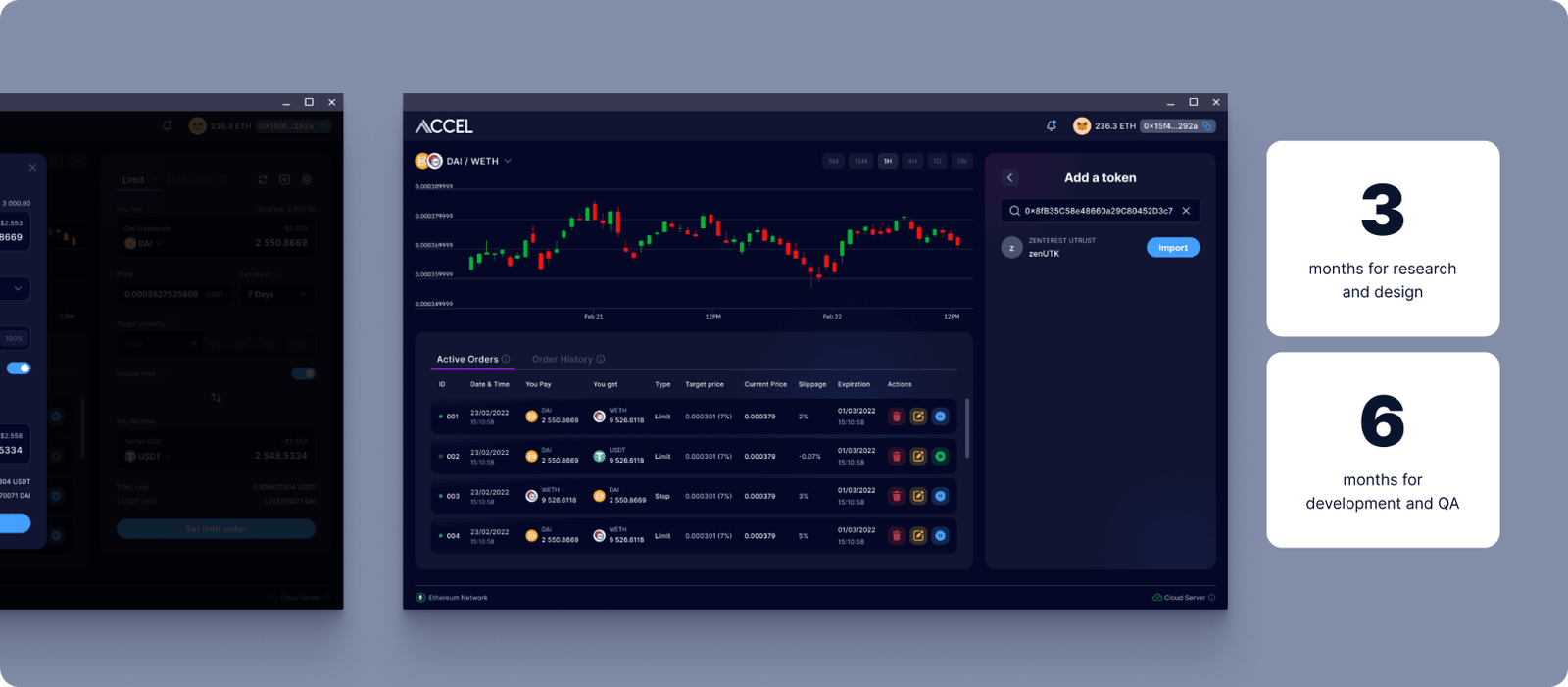
June 21, 2023
What is Product Design and the Product Design Process?
A product must satisfy consumer demand for a business to succeed. Creating a solution that meets people’s needs is known as product design. When done properly, it results in competitive offerings that conquer their audience. How to design a product? This process has multiple steps required to create a winning product.
This article reviews product design, its importance, key elements, requirements, and objectives. You will also learn about the design process and its eight steps. We will explain how to evaluate and modify your product design and improve the workflow, avoiding possible pitfalls.
Finally, we will share Artkai’s product design expertise, analyzing case studies like Accel and KMC Commander to demonstrate how a well-thought-out product design process works.
What is Product Design?
Product design is locating a market opportunity, outlining the issue, creating a suitable solution, and verifying the item with actual users. It ensures that the finished product is appealing to customers, attractive to look at, and cost-effective to produce. Before the actual design step starts, various planning and consideration stages go into product design.
This approach is based on the widely used framework known as design thinking, a human-centered approach to innovation that combines the needs of people, technical possibilities, and commercial objectives. Using design thinking, reframes queries around the demands of users and breaks down problems into manageable stages of product design.
Teams use product design as an iterative, practical process to recognize and reframe challenges, then develop and test innovative solutions. It is beneficial for understanding complex problems with numerous unknowns. Finding solutions to these issues depends on various contextual elements. Consider issues like:
- How to remain competitive?
- How to rank new features?
- How to design a seamless, practical end-to-end UX?
Processes in industrial design (manufacturing large amounts of goods) and product design frequently overlap. To avoid confusion, let’s focus on digital product design like websites, web apps, or software.
One of the common misconceptions about design is that it is only concerned with aesthetics. That’s incorrect. Looks matter, but no less vital are product features. It all comes down to providing customers with practical and valuable experiences. Simply put, the first principle of successful product development is to offer a solution to a user’s problem.
Why Product Design Matters
The importance of excellent product design grows as technology develops quickly. To create an engaging digital solution, a complicated procedure that goes beyond appearance is necessary. In other words, when designing a product, you need expertise in business analysis, user research, psychology, and software development.
With this knowledge, designers construct a successful digital experience that satisfies users' needs and preferences. Also, this aids businesses in achieving their goals. Customers who have a positive experience are more inclined to endorse and support the product.
People search the digital world for products that make their lives easier by providing brief and simple instructions. For instance, even if an app stems from a brilliant idea, it is helpful as long as the user experience is seamless. Similarly, it is the product design, not just the concept, that ultimately fulfills the needs and expectations of the end user.
Product Design Elements
Three main elements are required to design a product:

- Appearance. The ability to spark consumers' desire to buy is the primary objective of product appearance design. Solutions with appealing colors catch attention immediately while making purchases.
- Functionality. It ensures a practical design and enables consumers to fulfill their demands and objectives. When a product is highly functional, it accomplishes the goal for which it was created.
- Quality. It impacts the business's success and builds its reputation in target markets. When companies offer high-quality products, they win a bigger audience. Thus, their investment returns go up, and so does their income.
Designers should focus on giving value to customers and high functionality, performance, availability, and security to build a successful and competitive product.
Product Design Requirements
The requirements for product design are determined by the intended audience. There are two common scenarios. The first targets as many people as possible, so getting a precise user persona is difficult. As a result, the requirements are hazy, although you need to address consumer pain points. And, of course, your digital product should be fast, compact, and compatible with the most recent standard operating system updates.
The second option considers a clear picture of a target user. Thus, you have defined customer expectations to turn into specifications for product design. For a client to select the option they like most, the development business typically provides numerous choices that could meet all of the requirements.
Product Design Objectives
Undoubtedly, design determines a product's value, usability, and functionality. It seeks to tackle difficulties and meet consumers’ goals by creating eye-pleasing and functional solutions, environments, or systems. The delivery should also be as quick, accurate, and cost-efficient as possible from the maker's standpoint.
Experience has shown that finding a fair middle ground between the manufacturer's objectives and the consumer's interests is not always straightforward, particularly for startups. This is where a well-thought multi-step product design process steps in.
What is the Product Design Process?
The product design process (PDP) comprises multidisciplinary, user-centered design initiatives used to create digital goods. Its main objective is to develop exceptional goods with a quick go-to-market approach. Additionally, this product design methodology aims for growth through optimization.
Product design teams use the PDP as a crucial foundation to address particular issues while building prototypes, seeking to provide the best possible solutions. The process should be adjusted to meet the project's unique business and functional requirements. A few factors that impact the design process are as follows:
- The needs or preferences of the client;
- The project's deadline;
- The project's budget.
The most efficient product design process aligns with the company's and its users' capabilities.
8 Steps of the Product Design Process
While there is no one-size-fits-all approach to the process, some typical product design steps are required to build winning digital solutions. Let’s look at them.

Brainstorming
This is the first step of the process. There are often two groups of participants. One group consists of those who come up with solutions to problems, and the other comprises those responsible for digesting the ideas.
The brainstorming process now includes three stages:
- Defining the problem. It includes choosing members for both teams and declaring the issue. In this case, developing the right product design is a requirement.
- Generating ideas. It is a creative process where participants of the first group suggest all their thoughts, combining and improving the concepts. No criticism or evaluation is allowed at this stage.
- Selecting the best ideas. Here the second group evaluates and criticizes all the proposed ideas, choosing the most viable suggestions.
Defining Product Vision
When all prospective ideas are chosen, it is time to specify the general requirements for their implementation and understand the context of the solution. A vision directs and inspires the team. It reflects the core of the idea that guides the product creators and sets expectations for the outcome.
A shared vision makes it easier to understand "what we are trying to build and why." When developing a product, staying focused is easier if you know the limitations of your solution. The result is typically a very abstract list. Its purpose is not to produce a precise development guideline but to determine the directions for the team's future activities.
Carrying Out the User Research
In this step, product teams have various options for user research, including interviews, online surveys, contextual inquiry, market research, etc. Business analysts and marketers are in charge here. This is one of the vital product design phases, even if the business attempts to develop a universal product. Narrow down the requirements to ensure you use the budget effectively.
The product design team undertakes thorough market research to determine if rival items are on the market. Identifying the trends and evaluating the product's potential longevity is also vital.
Market research lays the foundation for creating customer portraits. The latter helps a product team better understand what the result should look like. Age, gender, marital status, income level, employment, place of residence, job position, needs, desires, and common issues are the categories of an ideal parameter set.
Sketching
Making sketches is a productive technique for working on large projects with a significant budget. It helps designers envision ideas, allowing them to quickly consider various design options before settling on one. Sketching helps to decide on an approach, clarifying the search's direction before putting money into the search for a solution. This is the only way to work on layouts, composition, revisions, and further idea development.
Prototyping
It is a vital part of your design process to provide a positive user experience. This experimental model allows you to test an idea before constructing the entire solution. A prototype frequently begins small, with you designing a few essential product components. It expands in breadth and depth over several iterations as necessary areas are developed.
Using this skeleton, you can specify the product's functionality, user interaction, and actual appearance. Prototypes significantly reduce future adjustments and errors, minimizing waste and costs. Designers hand over the finished prototype to the development team.
Setting Up Product Specifications
Elaborating on the requirements entails creating a list of specifications. It helps to thoroughly examine all demands for the end product and potential solutions. These specifications should also include the precise division of tasks, due dates, and expenses. Documentation is crucial during development.
Creating Samples (MVP)
A minimum viable product, or MVP, is equivalent to pre-production samples in software development. It aims to determine whether the solution's core idea appeals to real users. An MVP is a product with a set of core features sufficient to draw in early-adopter customers and prove the viability of a new concept.
It's crucial to remember that an MVP needs to be viable. It implies that it has to offer a top-notch user experience, allowing your consumers to perform a function. A user interface with numerous incomplete tools and features is unacceptable for an MVP. It should be a working product that customers are ready to pay for.
MVPs help the product teams gather customer feedback as soon as possible to iterate and enhance the solution. It allows your business to validate a product idea without full-fledged development. Moreover, MVPs reduce the time and resources you could otherwise devote to developing a product that will fail.
Sample/MVP Testing
Before release, the product’s quality is checked as part of MVP testing. It means gathering feedback on the final solution. MVP testing allows business owners to determine if their product is practical and achievable. It helps you quickly discover any flaws in the product or compliance issues before starting the expensive implementation procedure.
You can develop and test MVPs as often as necessary to meet all the requirements and receive favorable client feedback. Testing ensures that businesses produce and deliver goods without flaws and satisfy client needs and expectations. Although quality assurance is essential at every stage, pre-release testing for app development determines the quality of the finished product. The solution should satisfy the requirements and specifications.
It is also vital to ensure the quality after the solution has been released and maintained. High-quality products provide a positive user experience, resulting in customer loyalty, repeated purchases, referrals, upsell, and brand advocacy.
How to Evaluate Product Design?
You can use a SWOT analysis to evaluate the final product design objectively. It suggests answering the questions in four areas:
- What benefits does your product provide (Strengths)? How readily can you communicate this value to customers, what user problems it resolves, how closely were the deadlines adhered to, etc? These are just a few examples of how advantageous your product is for the target audience.
- What are the drawbacks of your product (Weaknesses)? Think about the ways to improve your solution. What does your team require for it? What can prevent your product from being successfully promoted to the target audience? What flaws does your idea have in the eyes of the audience?
- What are the options for promoting your product (Opportunities)? For example, how straightforward it will be to promote the solution on the market, its competitive advantages, which promotion channels will be most effective, how successful it will be over the long run, etc.
- What can prevent the successful promotion of your product (Threats)? Do the product's drawbacks pose significant risks for marketing? Are any rival products difficult to surpass?

Making Changes to Your Product Design
If you want to modify the final look of your product, you need to add two more steps in product design to the process mentioned above.
- Understanding what you want and can accomplish with the altered design;
- Executing end-to-end competitive analysis.
For the first step, you need to review your product’s popularity metrics, such as conversion, user retention, etc. As a result, you should first evaluate the product’s current iteration before determining whether improvements are needed. A/B testing can also be used to determine the level of adjustment. You can change the current design, observe how users react, and decide whether or not it will be as beneficial as creating a new one.
Secondly, assess the competitive products' actual costs and budgets. The cost of changing the product's design to outmatch some rivals can be much higher than the projected revenue. Then you can limit the changes, adopting only the elements that have proven appealing to target audiences comparable to yours.
Pitfalls to Avoid When Designing a Product
When attempting to create a new product, people frequently make the following mistakes:

Choosing Aesthetics over Functionality
An ideal product design blends practical features with pleasing looks. During the planning phase, you can realize that following design trends makes the product ineffective or expensive for the target market. Then, use the tried-and-true methods instead.
Not Meeting the Deadlines
Consider all potential delays and cases of force majeure when establishing the due dates. Otherwise, you risk breaking deadlines and submitting a raw project with an incomplete design.
Using Inadequate Project Documentation
Products frequently fall short of client expectations because product teams rely on inaccurate technical standards. It's better to double-check the precision of the documentation than to rebuild the entire product.
Violating Intellectual Property Rights
It concerns primarily your product's visual aspect. Ensure that your design team does not unintentionally or intentionally copy the main concepts from other projects. It not only carries the risk of your project failing on the market but also of costly litigation.
Lacking Ideas for Upcoming Marketing Initiatives
Before completing the entire product design process, you need to have a clear concept of the channels and resources you'll use to sell the product to the public. Typically, this is the duty of marketers, with whom you should have a prior conversation about this issue. Having planned marketing campaigns, you will know how to convince clients of the product's advantages.
Not Keeping Up with Current Advancements and Trends in Niche
Consumers are eager to buy the most cutting-edge, sophisticated product. Therefore, ignoring market trends can result in the product being ultimately unsuccessful when it is introduced to the target market in the future. Most importantly, it should not conflict with the first point on the list.
Unwillingness to Consult with Outside Professionals
Teams frequently try to use existing in-house specialists even when they have no prior experience with the aim of cutting costs. This is fundamentally incorrect. Instead of making your team members conduct field research, turning to contractors with exceptional competence in your required work area is better.
Tips for Streamlining Your Design Process
The following are some straightforward suggestions for improving the design process for new digital products:
Research Your Customers Diligently
Study thoroughly the group of people for whom the product is meant to define the design's direction correctly. Don't skip the user research process, especially while generating customer portraits. Put yourself in your customer’s shoes and act accordingly. You will then be able to determine whether your estimates are accurate.
Face Problems With Courage
Make finding and solving problems a challenge for your team rather than something to be afraid of. You'll need to redo the outcome if you consistently put off solving problems or entirely miss them instead of focusing on the tasks you excel at. The easiest way to handle this is to immediately take on the most challenging tasks when your staff is fired up and ready to work.
Keep a Close Eye on Potential Expenses
Potential expenses frequently turn out to be higher than expected. If you ignore them, you risk only completing some of the projects and putting the rest off until better times and possibly when your product will be obsolete.
Artkai Product Design Experience
Artkai is a digital product design and development agency that can help you increase your user base and revenue streams with stellar product designs. Our expert product design services include discovery, product strategy, customer journey mapping, wireframing, UX/UI, and visual identity.
We adhere to a straightforward product design workflow when developing your web application.
- Research and conceptualization;
- Wireframing;
- Validation and testing;
- Visual design;
- Product development.
Our design specialists will guide your product to success through idea validation, a conversion boost, stellar app design, higher product adoption, better user journeys, and consistent branding. Over the years, we have assisted numerous companies in improving product design and increasing their market impact.
Product Design Process: Artkai’s Case Studies
See how we can transform your app by looking at our case studies.
KMC Commander: Unified IoT Platform
Our client is an independent American manufacturer of open, secure, and scalable building automation and technology solutions, KMC Controls. They contacted the Artkai team because the company required a solution that allows them to control several air-quality variables from a single dashboard. Their current KMC Commander system had several UX problems and was out-of-date and unreliable.
Our team had the opportunity to revive KMC Commander, more importantly, to change the course of contemporary smart building ecosystems. We were tasked with auditing and redesigning the existing solution to create a universal, user-friendly, and modern solution. It should have an easy-to-understand system dashboard that can be smoothly customized to the client's scale.
We created a thorough, step-by-step plan to begin the transformation journey of the current product:
- Conducting client interviews;
- Creating personas and customer journey maps;
- Preparing and prioritizing backlog;
- Building visual concept and clickable prototype;
- Development with React, Vue Native, Node.

As a result, KMC Commander established a solid base for a contemporary smart building ecosystem. It became simple to connect with 150+ partners thanks to a well-designed system. The list features well-known company names like Intel and Amazon. Our joint efforts had remarkable outcomes for the client:
- 35% rise in average users
- 1,5 reduction in the turnover rate.
Accel: Decentralized Trading Application
Our client is Accel, a fintech firm that provides cutting-edge trading tools for DeFi traders and EVM-based networks. They had an idea for a new product that would enhance the ecology of its existing products. The goal was to develop a desktop program to provide customers with a safer and more practical trading alternative.
The Artkai team was tasked with building a fully functional revenue-generating solution for a closed community and developing cutting-edge bot technology to safeguard users' assets. Two UI/UX designers, two front-end engineers, a Web3 full-stack engineer, a solution architect, a project manager, a business analyst, a DevOps engineer, and a QA engineer worked on the project.

After the research and discovery stages, the Artkai team carried out design and development simultaneously. As a result, we developed a complex decentralized trading application that customers can use quickly and intuitively. Therefore, optimization enhanced platform attendance.
Create Winning Design Solutions with Artkai
Building an appealing digital product requires a comprehensive design beyond aesthetics. It involves business analysis, user research, psychology, and software development knowledge. The product design process aims to create excellent products with a speedy go-to-market strategy and promote growth through optimization. It helps businesses achieve their goals by creating a thriving digital experience that meets users' needs.
Artkai specialists have established expertise in digital product design after helping various businesses enhance their product designs and expand their market impact for years. We implement an easy-to-follow process to help your product succeed with practical design ideas. Let your user base and revenue streams grow with our superior design solutions.
Contact us to discuss your product design ideas and get an estimate.
Clients and Results
Schedule your free consultation
Don't miss this opportunity to explore the best path for your product. We are ready to delve into the specifics of your project, providing you with expert insights and optimal solutions.
Book your free sessionRead More
Explore articles from Artkai - we have lots of stories to tell
Join us to do the best work of your life
Together we advance the human experience through design.